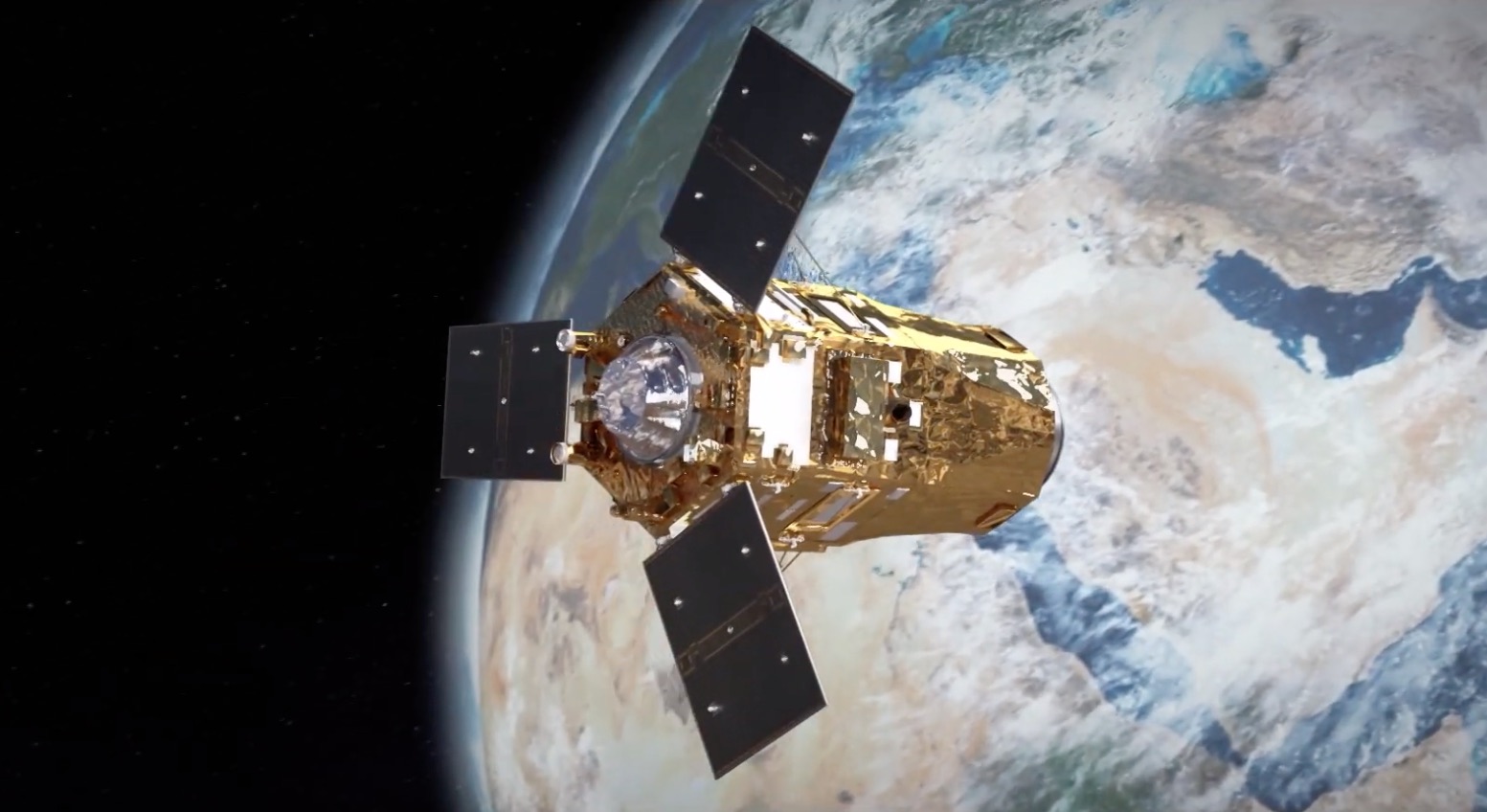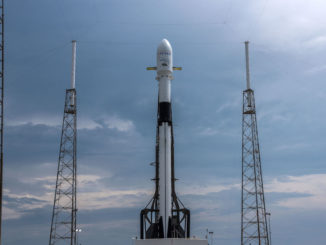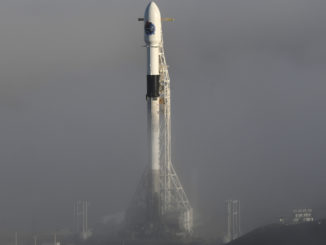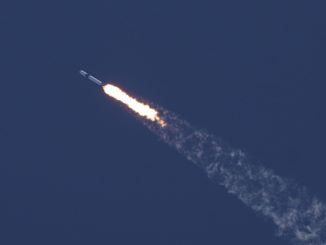
A Soyuz booster is set for launch from French Guiana Sunday night with a European-built military reconnaissance satellite for the United Arab Emirates, the twin of a UAE surveillance craft lost in a rocket failure last year.
The 2,623-pound (1,190-kilogram) Falcon Eye 2 satellite is closed up inside the nose cone of a Soyuz ST-A rocket set for blastoff at 8:33:28 p.m. EST Sunday (0133:28 GMT Monday).
After heading north from the European-run spaceport in French Guiana, the Soyuz ST-A rocket will aim to place the Airbus-built spacecraft into a circular 379-mile-high (611-kilometer) sun-synchronous orbit that flies over Earth’s poles.
The mission — managed by the French company Arianespace — will mark the 24th flight of a Russian-built Soyuz rocket from French Guiana, and the 12th launch of a Soyuz rocket from launch sites worldwide this year.
The launch of the UAE’s Falcon Eye 2 satellite comes more than a year after an identical spacecraft named Falcon Eye 1 was destroyed in a Vega rocket failure in July 2019.
The Falcon Eye 1 mission was insured for 369 million euros, or $407 million, including the value of the satellite and the launch, according to Space News.
Officials from the UAE government, which owns the billion-dollar Falcon Eye program, decided after last year’s failure to swap the launch of the identical Falcon Eye 2 satellite in the Arianespace launch schedule from a Vega rocket to a Soyuz booster.
The light-class Vega rocket is one of three launchers operated by Arianespace from the Guiana Space Center, alongside the medium-lift Russian-made Soyuz launcher and the heavy-lift Ariane 5 rocket.
Airbus Defense and Space built the Falcon Eye satellites, and Thales Alenia Space provided the high-resolution optical imaging payloads for both spacecraft.
The agreement between the UAE and French industry to build the Falcon Eye satellites was brokered with the backing of the French government, but a security review by the U.S. government delayed the final signature of the contract between the UAE, Airbus and Thales until 2014. The satellites use some U.S.-made components, prompting the Obama administration to put a temporary hold on the deal until officials ultimately approved the export of the U.S. parts for use by the UAE military.
The Falcon Eye 2 satellite will provide high-resolution surveillance imagery to the UAE military. The two Falcon Eye spacecraft were built on the design of the French Pleiades Earth-imaging satellites launched in 2011 and 2012, and reportedly have a resolution of about 2.3 feet, or 70 centimeters, in their highest-resolution imaging mode.

After switching to a Soyuz rocket, the Falcon Eye 2 satellite was supposed to take off in March. But technical problems with the Soyuz rocket’s Fregat upper stage and delays caused by the coronavirus pandemic forced officials to reschedule the flight for November.
The Soyuz rocket and Fregat upper stage’s launch sequence Sunday night will last nearly 59 minutes from liftoff until separation of the Falcon Eye 2 satellite in orbit.
The kerosene-fueled Soyuz ST-A rocket will climb off its launch pad with more than 900,000 pounds of thrust, accelerate through the speed of sound, and jettison its four liquid strap-on boosters about two minutes into the mission.
The rocket’s payload fairing will drop away at Plus+3 minutes, 59 seconds, followed by shutdown and separation of the Soyuz core stage at Plus+4 minutes, 47 seconds.
The third stage’s RD-0110 engine will burn for around four minutes before deploying the Fregat upper stage at Plus+8 minutes, 48 seconds, for a pair of firings to first reach a parking orbit around Earth, then enter a circular 379-mile-high orbit.
Separation of the Falcon Eye 2 satellite is scheduled at Plus+58 minutes, 45 seconds, or at 9:32 p.m. EST (0232 GMT).
Email the author.
Follow Stephen Clark on Twitter: @StephenClark1.



